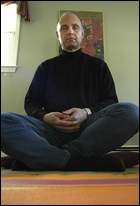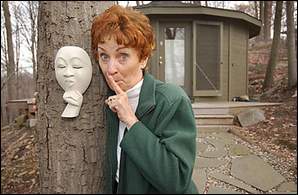To Find the Love of Your Life, Know Your Dosha!
Ask anyone and you’ll get the same answer: What’s the most important thing in life? Love! We want to be in love, and we want that love to last. So how do we go about finding that one person to share our lives with? And how do we live happily ever after with that person once we find him or her?
There are many ways of looking at our compatibility with other people – such as the Mars/Venus theories, and the Love Signs system based on astrology, among others. But long before any of these formulas were even a twinkle in the cosmos, philosophers and scientists in Ancient India devised a system of health care called “Ayurveda” – or “the science of life.” Within this holistic system lies everything we need to know about love.
Ayurveda explains the nature of everything in the universe. It is a compelling way of looking at all of life, the physical, emotional, mental, and spiritual. Ayurveda “types” people according to both their physical features and personality traits. Ayurveda tells us how we “tick,” and how we relate to the rest of the world, including the other people in it!
Once we understand the basics of Ayurveda, we see that we can get along with anyone. There are no “bad” matches! So whether you want to end the squabbling with your mate, you’re having a hard time with your boss, or your boyfriend just can’t commit, with this system of Ancient Indian Love Matches, you’ll find ways to make the relationship work.
It is impossible to go through this life alone. We all have relationships, people in our lives to interact with. The purpose of those relationships is to help us learn and grow. And more than that, the purpose of any relationship is to help us learn more about ourselves and who we really are.
When we understand who we are, and why we are here, everything seems to fall into place. We’re happier, more content, and we feel our connection to the universe. We attract like-minded people into our lives and our relationships become stronger.
As important as our relationships are to us, how much time and effort do we really put into them? So often we go about living our lives and expect that another person either fits into that picture or doesn’t. But we each have needs, and temperaments, and ideas about how we like things to be. When we better understand ourselves, and each other, we can focus on what is important, and what makes a relationship work.
When I first learned about Ayurveda, I was impressed with how simple and clear it made everything to me. The whole system just makes sense, and you can apply it to anything in your life! I’ve read lots of books about Ayurveda, and even more books on relationships, but I’ve never come across one book that applied this age-old system to our very modern-day relationships. So I decided to work it out myself, and that is how my book, “What’s Your Dosha, Baby? Discover the Vedic Way for Compatibility in Life and Love” came about.
Because Ayurveda sees people as three different mind/body types, or “doshas,” there are basically nine different “Love Matches” (3 x 3). Of course in reality there are an infinite number of combinations, because no two people are exactly alike in any particular way, but we’re keeping the numbers manageable here! Once you find out your particular dosha (free online quiz at www.whatsyourdosha.com), and the dosha of the person with whom you are in relationship, then you can look up the chapter that corresponds to the two of you. Here you’ll find clues as to how you interact with each other, your communication styles (physical and emotional as well), instinctual preferences with regards to food, travel, lifestyle and work among others. This system shows us how we can please each other and ourselves at the same time. It shows us how we can live in harmony with those around us by recognizing a person’s natural qualities and bringing more love into the world
If you are looking to understand or strengthen a relationship with someone other than your mate – say, a colleague or friend or child – it will help you with that, too. And because we all have a unique relationship with our environment, there are principles called “Vastu” we can use. Through our use of space and color, we can create an environment where we feel inspired and blissful.
Love is an amazing phenomenon, and the reason that all of us are here. It’s worth our study, our attention. Why are we attracted to the people we are attracted to? Why is that we feel as if we “can’t help” who we fall in love with? What is the chemistry that draws us to certain people?
We may never figure ourselves out. Or maybe we already have. Maybe the ancient texts are right and all the answers we will ever need are available to us now… we just need to keep learning and growing until we finally “get it.”
One thing’s for sure, finding love and connection is one of the most important – and pleasurable – things we come here to do. My hope is that Ayurveda, with its ancient Indian secrets for keeping love burning bright, will not only help you in your process of self-discovery but enable you to find and nourish the love matches of your dreams.
















